#Siegfried Breuer
Explore tagged Tumblr posts
Text
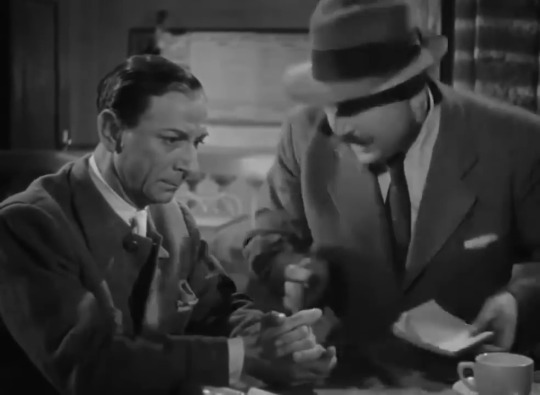


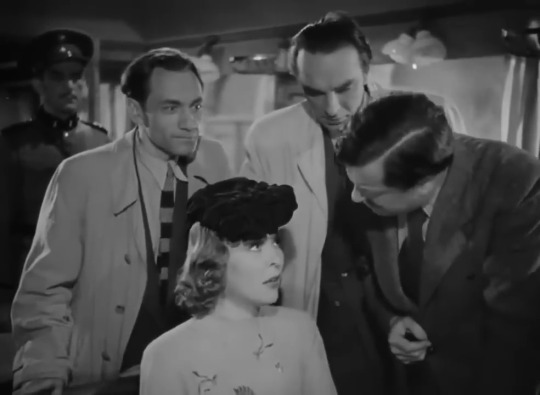


orient express, victor tourjansky 1944
#orient express#victor tourjansky#1944#bavaria-filmkunst#paul dahlke#rudolf prack#joseph offenbach#oskar sima#hilde sessak#gusti wolf#lotte lang#lisa siebel#siegfried breuer#tibor halmay#falsche bewegung#acca
0 notes
Text
The Third Man (1949) Review
When novelist Holly Martins travels to postwar Vienna he finds himself investigating the mysterious death of an old friend named Harry Lime, who had just happened to offer him a job. ⭐️⭐️⭐️⭐️⭐️ Continue reading The Third Man (1949) Review
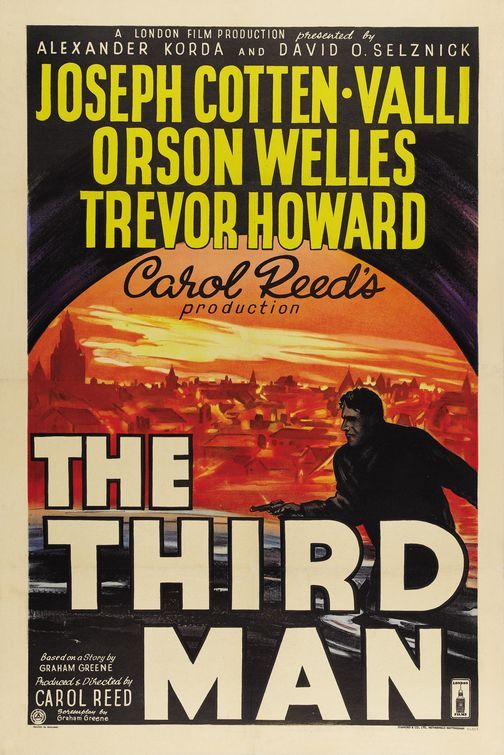
View On WordPress
#1949#Alexander Korda#Alida Valli#BBC iPlayer#Brenard Lee#Carol Reed#Erich Ponto#Ernst Deutsch#Film-Noir#Graham Greene#Harold Ayer#Hedwig Bleibtreu#Joseph Cotten#Martin Boddey#Mystery#Nelly Arno#Orson Welles#Paul Horbiger#Review#Siegfried Breuer#The Third Man#Thriller#Trevor Howard#Wilfrid Hyde-White
0 notes
Text





















"Stark ruft das Lied; kräftig reizt der Zauber." SIEGFRIED - R. WAGNER Here some Siegfrieds, Mimes, Wanderers and Brünnhildes.
Henny Borchers as Brünnhilde; Breslau, ca. 1900
Francisque Delmas as Wanderer; Paris, 1902
Louise Grandjean as Brünnhilde; Paris, 1902
Pierre-Emil Engel as Mime; Brussels, 1902
Fritz Remond as Siegfried; Karlsruhe, 1904
Fritz Feinhals as Wanderer; Munich, 1906
Zdenka Fassbender as Brünnhilde; Munich, 1906(?)
Marianna Tcherkasskaya as Brünnhilde; Milan, 1909
Paul Kuhn as Mime; Munich, 1912
Julius Lieban as Mime; Berlin, 1912
Hans Breuer as Mime; Bayreuth, 1914
Eduard Habich as Alberich; Bayreuth, 1914
Albert Reiss as Mime; New York, 1916
Karl Koss as Mime; Graz, 1919
Rudolf Bockelmann as Wanderer; Hamburg, 30s
Erich Zimmermann as Mime; Bayreuth, 1930
August Seydel as Mime; Munich, 30s(?)
Anny Konetzni as Brünnhilde and Josef Kalenberg as Siegfried; Vienna, 1934
Karl Kamann as Wanderer; Vienna, 1938
Jaro Prohaska as Wanderer; Bayreuth, 1941
#classical music#opera#music history#bel canto#composer#classical composer#aria#classical studies#maestro#chest voice#Siegfried#Musikdrama#Der Ring des Nibelungen#The Ring of the Nibelung#Richard Wagner#Bayreuth Festspielhaus#Bayreuth Festival#German legends#Nordic legends#classical musician#classical musicians#classical history#opera history#history of music#history#historian of music#musican#musicians#diva#prima donna
6 notes
·
View notes
Photo










The Third Man (1949) Carol Reed
March 1st 2022
#the third man#1949#carol reed#joseph cotten#alida valli#orson welles#trevor howard#bernard lee#paul horbiger#ernst deutsch#wilfrid hyde-white#hedwig bleibtreu#siegfried breuer#erich ponto#carol reed's production the third man#the 3rd man
62 notes
·
View notes
Text
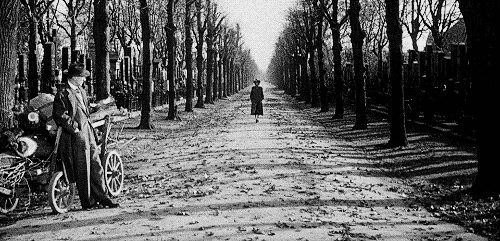
@tcmparty live tweet schedule for the week beginning Monday, August 01, 2022. Look for us on Twitter…watch and tweet along…remember to add #TCMParty to your tweets so everyone can find them :) All times are Eastern.
Friday, Aug. 05 at 8:00 p.m. THE THIRD MAN (1949) A man's investigation of a friend's death uncovers corruption in post-World War II Vienna.
#schedule#summer under the stars#SUTS#orson welles#carol reed#the cuckoo clock#joseph cotten#alida valli#trevor howard#bernard lee#ernst deutch#siegfried breuer#wilfred hyde-white#erich ponto#1940s#espionage#film noir#based on a novel#live tweet#classic movies#classic film#turner classic movies#tcm party
21 notes
·
View notes
Text

The Third Man (1949) Carol Reed
13-10-2019
Mysterious noir thriller with a masterful unravelling of the story and an iconic chase scene set in the sewers
#the third man#1949#carol reed#uk#joseph cotton#alida valli#orson welles#trevor howard#bernard lee#paul horbiger#ernst deutsch#siegfried breuer#erich ponto
9 notes
·
View notes
Photo

#The Third Man#Carol Reed#Joseph Cotten#Alida Valli#Orson Welles#Trevor Howard#Bernard Lee#Paul Hörbiger#Ernst Deutsch#Siegfried Breuer#Erich Ponto#Wilfrid Hyde-White
4 notes
·
View notes
Photo

anuschka (1942)
1 note
·
View note
Photo






*

#der postmeister#gustav ucicky#1940#heinrich george#siegfried breuer#hilde krahl#am ende der welt#1944#tarkovsky#ubiytsy#1956#heinrich mann#walter benjamin#herz aus glas
0 notes
Photo





#gif#alcool#cinema#le troisième homme#the third man#carol reed#1949#joseph cotten#siegfried breuer#ENYG
1 note
·
View note
Text
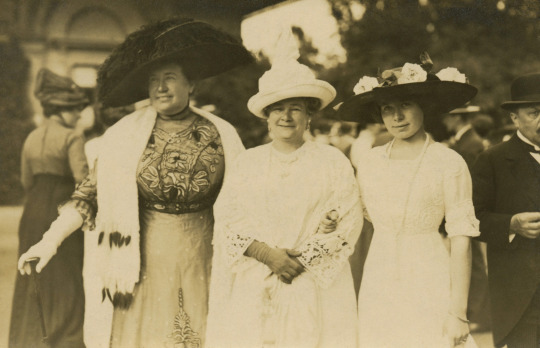

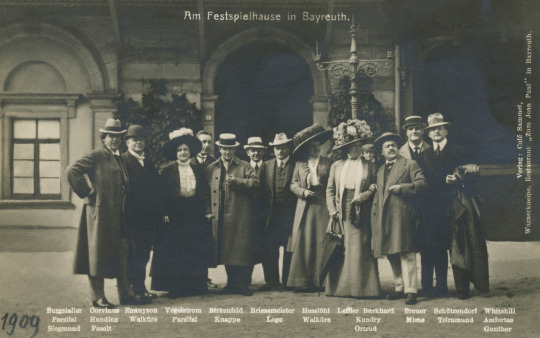

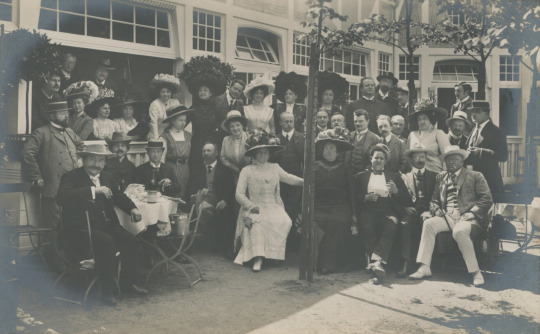
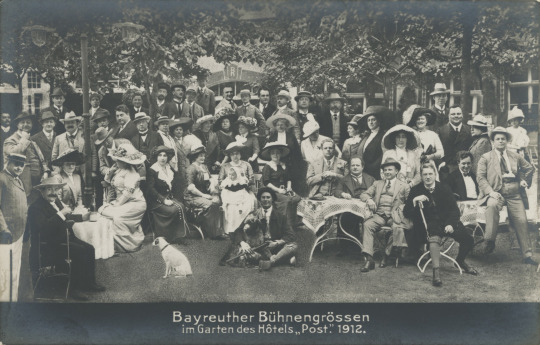

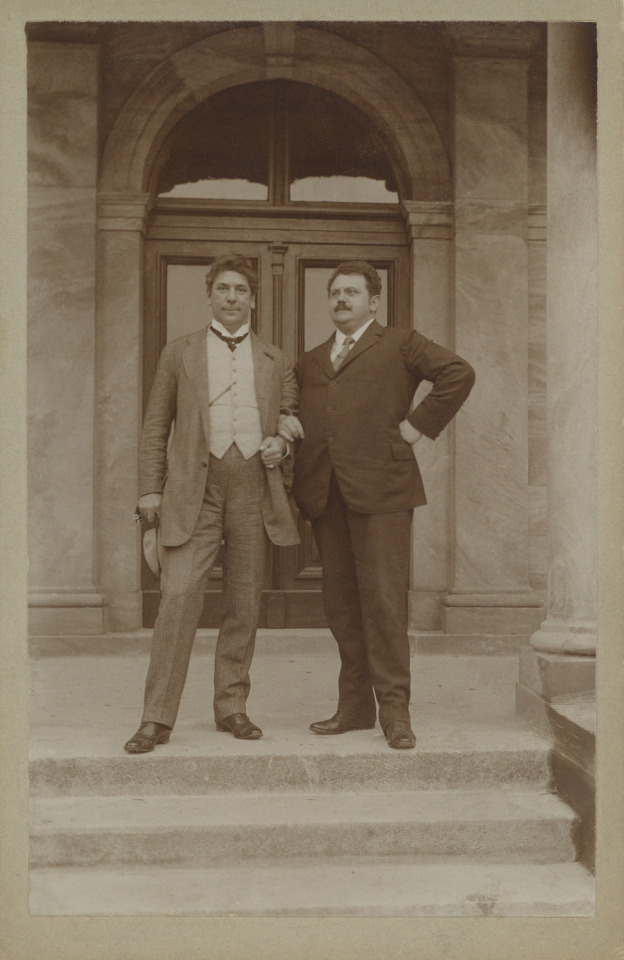

Bayreuther Bühnenfestspiele / Bayreuth Festival
THE SINGERS IN PICTURES FROM THE EARLY DAYS IN THEIR LEISURE TIME TOGETHER.
Ellen Gulbranson, Ernestine Schumann-Heink and daughter; Bayreuth, ?
Hugo Rüdel, Dr. Carl Muck, Anna Bahr-Mildenburg, Clarence Whitehill, Gertrude Rennyson, Lorenz Corvinus, Ellen Gulbranson (daughter), Hermann Bahr, Carl Braun, Fritz Vogelstrom and Marie Wittich; Bayreuth, 1906
Alois Burgstaller, Lorenz Corvinus, Gertrude Rennyson, Willy Birkenfeld, Otto Brisemeister, Emma Hesslöh, Martha Leffler-Burkhart, Hans Breuer, Alfons Schützendorf and Clarence Whitehill; Bayreuth, 1909
Karl Kittel, Hans Breuer, Alexander Kirchner, Rudolf Moest, Nikola Geisse-Winkel, Carl Braun, Ellen Gulbranson, Alois Burgstaller, Lily Hafgren-Waag, Lorenz Corvinus, Louise Reuss-Belce, Marie Wittich, Käthe Neubeck, Wilhelm Fenten and Otto Brisemeister; Bayreuth, ?
Lily Hafgren-Waag, Elsa Band-Agloda, Ellen Gulbranson, Fritz Vogelstrom, Nikola Geisse-Winkel and others (Could you identify all the singers?); Bayreuth, 1909
Ellen Gulbranson, Anna Bahr-Mildenburg, Ottilie Metzger-Lattermann and others; Bayreuth, 1912
Siegfried Wagner, ? Wieking, Ernestine Schumann-Heink, Eduard Habich, Michael Bohnen, Franz Stassen (illustrator), Prof. Khnopff (?), Hans Breuer, Winifred Wagner and others. Restaurant "Eule", Bayreuth, ?
Alois Burgstaller and Walter Soomer; Bayreuth 1897
Alois Burgstaller, Hans Breuer, Max Schlosser and Hans Schütz; Bayreuth 1896
#classical music#opera#music history#bel canto#composer#classical composer#aria#classical studies#maestro#chest voice#Bayreuther Bühnenfestspiele#Bayreuth Festival#classical musician#classical musicians#classical history#opera history#historian of music#history of music#musician#musicians#diva#prima donna
5 notes
·
View notes
Photo

Joseph Cotten and Alida Valli in The Third Man (Carol Reed, 1949) Cast: Joseph Cotten, Alida Valli, Orson Welles, Trevor Howard, Bernard Lee, Paul Hörbiger, Ernst Deutsch, Siegfried Breuer, Erich Ponto, Wilfrid Hyde-White, Hedwig Bleibtreu. Screenplay: Graham Greene. Cinematography: Robert Krasker. Art direction: Vincent Korda. Film editing: Oswald Hafenrichter. Music: Anton Karas. It's my contention that the mark of a great film is the density of its texture, its ability to let you find something new or different, or simply to remember a forgotten moment, each time you watch it. I have to admit that I wasn't much looking forward to rewatching The Third Man, but I felt obliged since I hadn't seen it for some time and I do have it on my list of great movies. I knew what was coming: the great doorway revelation, the Ferris wheel conversation, the chase through the sewers, and Anna walking toward and past Holly along an allée of pollarded trees. But Carol Reed's film is full of so many incidentals that bring even familiar scenes to life. For example, when Anna is picked up by the international police -- a force made up of members of each of Vienna's occupying forces -- she's allowed to pack a bag. It's the Frenchman who reminds her that she has forgotten her lipstick. Touches like this, or Anna's landlady protesting in German that needs no subtitles to get its point across, are essential to the film's greatness. I had forgotten the demon child who fingers Holly as a murderer after the porter's death. I hadn't realized how Robert Krasker's expressionistically tilted camera in much of the film is counterpointed by his concluding shot, the long, foursquare, devastatingly symmetrical take of Anna's walk along the allée. To be sure, there are things that don't quite make sense: Why is a man selling balloons at night in the deserted Vienna streets? And the light that reveals Harry Lime in the doorway comes from no plausible source. But these are moments for quibblers, not for those who luxuriate in cinematic poetry.
0 notes
Text
Analysis of 'The Third Man'
Analysis of ‘The Third Man’
The Third Man is a 1949 British noir film directed by Carol Reed with a screenplay by Graham Greene, from a novella Greene wrote to flesh out the story, but which wasn’t originally meant to be published. The film stars Joseph Cotten, Orson Welles, Trevor Howard, and Valli; it costars Wilfred Hyde-White, Paul Hörbiger, Ernst Deutsch, Erich Ponto, and Siegfried Breuer. The film is noted for its…
View On WordPress
0 notes
Photo


CALIFICACIÓN PERSONAL: 6,5 / 10
Título Original: The Third Man
Año: 1949
Duración: 104 min
País: Reino Unido
Director: Carol Reed
Guion: Graham Greene (Novela: Graham Greene)
Música: Anton Karas
Fotografía: Robert Krasker (B&W)
Reparto: Joseph Cotten, Alida Valli, Trevor Howard, Orson Welles, Bernard Lee, Paul Hörbiger, Ernst Deutsch, Siegfried Breuer, Erich Ponto, Wilfrid Hyde-White, Hedwig Bleibtreu
Productora: Alexander Korda, David O. Selznick. London Films
Género: Film-Noir, Mystery, Thriller
https://www.imdb.com/title/tt0041959/
TRAILER:
youtube
0 notes
Text
MA Fashion and Textile Practices Major Project Path - 30th August
Straight after the programme Bauhaus 100 there was another Design Season programme called Bauhaus Rules with Vic Reeves. I love Vic Reeves (Jim Moir) so thought it could be an interesting watch. With 2019 marking the 100th anniversary of Bauhaus, BBC Four took the cameras to London’s Central Saint Martins to see if current students at the art school could live by the rules of Bauhaus for a week. Accompanying them was the shows presenter celebrity comedian Vic Reeves. Six graduates of the school were asked to participate in the Bauhaus takeover experiment, whose disciplines ranged from fine art, fashion, graphic design and architecture. Each day they would be presented with a creative brief inspired by the Bauhaus workshops, to see if the power of Bauhaus still holds true today. On the Saturday they would be holding a Bauhaus inspired costume party and were told to ask anybody who was up for it to come along.

Linkedin, n.d. (n.d). Central Saint Martins, University of The Arts London. [Photograph]. Retrieved from https://www.linkedin.com/company/central-saint-martins-college-of-art-and-design-university-of-the-arts-london/.
Setting the briefs for the graduates were keys figures from art and design - the first of which was artist Ian Whittlesea, who had studied the exercise regimen devised by Bauhaus Master Johannes Itten. The graduates were took to the roof of the school and followed a set of exercises delivered by Whittlesea. The graduates could see the point of these mind clearing exercises, one ex student Lisa Darrer (2019) said it made her feel really grounded and aware of her surroundings, another ex student - Lizzy Deacon (2019) said she felt very aware of her body and noticed one of her hands was bigger than the other. The exercises really seemed to make an impact on the students as a whole, making themselves more aware of themselves and their surroundings.
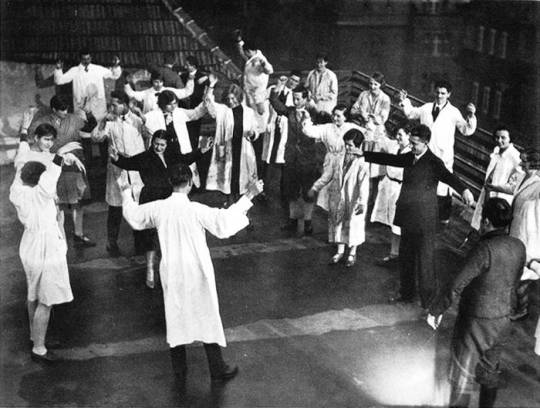
The Art Story, n.d. (n.d). Itten leading his students in physical exercises. [Photograph]. Retrieved from https://www.theartstory.org/artist/itten-johannes/.
They were then taken to the canteen where they were given a meal of bread and a recipe of Itten’s creation - ‘garlic mush’, which some of them enjoyed as they said it was probably healthier and better for them than some of the meals they had been eating as students!
Ian then set the graduates their first creative brief, they were to explore the contrast between basic materials such as rough and smooth, hard and soft,light and dark etc. and to make a piece of art from it - this reminded me of Marcel Duchamp and his found art or ‘Readymade’s’. All the students materials were to come from the ground or from the bins of the school. This exercise in discovering the most basic of materials was part of the preliminary course at Bauhaus and was to help the students see the usefulness and beauty in everyday objects. I remember doing a similar exercise whilst studying for my degree in Graphic Design, except it was to show contrasts between fonts.

Mirkin, M. (1922). Contrast Study with Different Materials (Reconstruction 1967). [Mixed Media]. Retrieved from https://www.pinterest.co.uk/pin/279152876885423902/?lp=true.
The graduates were then asked to blindfold themselves to feel the objects they had found, this was also one of Itten’s ideas, that to create something the students must engage with all their senses and discover their sense of ‘play’. They were then given an hour and a half to produce their pieces. It was a good exercise for the graduates, they said it was like they were relearning and rediscovering materials they would have otherwise ignored.
The next brief was to echo Wassily Kandinsky’s colour theory practice. To set this brief was Scottish artist David Batchelor - whose installations use colour and geometry in a similar way. He gave each of the graduates a piece of paper which showed a line drawing of a circle, triangle and square. They then had to assign the three primary colours given to each of the shapes - red, yellow and blue. He wanted them to consider carefully each shape and colour and try to ‘feel’ which colour went with which shape - under Kandinsky’s rule there is only one correct answer!
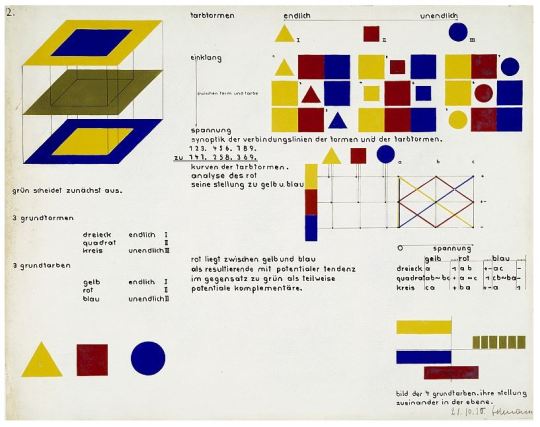
Bormann, H.S. (1930). Heinrich-Siegfried Bormann, Illustration of the four primary colours: their planar relation to each other (study from Kandinsky’s course), 1930. [Illustration]. Retrieved from https://www.vmbee.com/blogvmb/2016/3/22/bauh.

Bayer, H. (1968). 50 Jahre Bauhaus. [Poster]. Retrieved from http://www.artnet.com/artists/herbert-bayer/50-jahre-bauhaus-poster-C1hxUHTljHkT8CPbW1MJyg2.
The answer was of course illustrated in the study of the theory by one of Kandinsky’s students Heinrich-Siegfried Bormann and in the above poster by Herbert Bayer. According to Kandinsky’s Basic Colour Theory he determined that the triangle was an interesting shape so it deserved a energetic and lively colour such as yellow. The square was of some interest so would suit a strong colour such as red, and the circle being a ‘dull’ shape required the colour blue which was a peaceful colour. Only Vic Reeves and one other graduate passed the test. They said they felt drawn to use yellow for the triangle as it felt like an unsettling colour, interesting! That is pretty much how Kandinsky would describe the colour. David then set them a task to use only three primary colours and the three basic shapes to create a piece of art, or whatever they wanted. David (2019) made an interesting comment in regards to Kandinsky’s method of using intrinsic methods:
“It all sounds pretty wacky today, but immediately after the first world war - a world which appears to be falling apart - and they’re just trying to stick it back together again in a new way”
It was true that Gropius had set up the Bauhaus school to find a new way of thinking after the horrors of the war. They were grasping at ideas and running with them. It was same as the graduates in the documentary, some of them decided to abandon his method and go with whatever idea they had, not agreeing with the rigidity it set - sometimes it is all about breaking the rules! ��
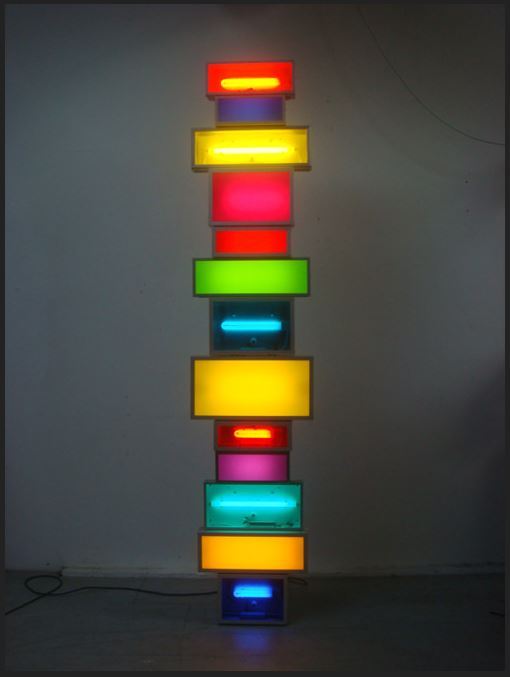
Batchelor, D. (2013). Spectotem 6. [Installation]. Retrieved from https://curiator.com/art/david-batchelor/spectotem-6.
The next to offer up a brief was head of design at Habitat Kate Butler. She first discussed Marcel Breuer’s iconic Wassily Chair. Made from tubular steel and inspired by the artists Adler bicycle handlebars, it was the start of what was to become tubular steel furniture. The process for creating tubular steel had only just come onto the market and produced by German steel manufacturer Mannesmann. Breuer took this idea and adapted it to fit his furniture concepts. The designs were revolutionary at the time, using bent tubular steel and materials such as leather had never been done before.
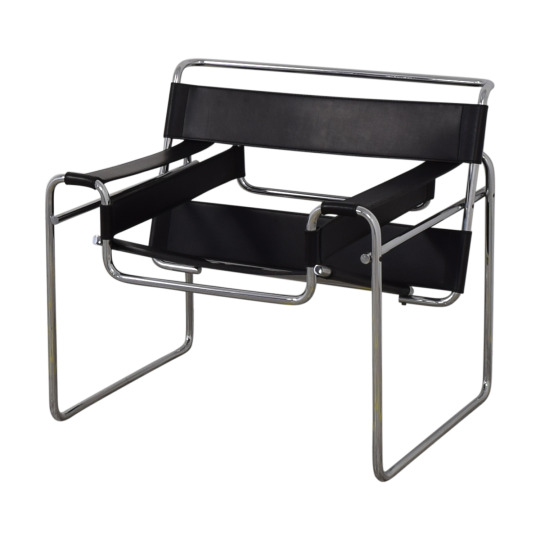
Breuer, M. (1925). Marcel Breuer Wassily Chair. [Furniture]. Retrieved from https://kaiyo.com/knoll-knoll-marcel-breuer-wassily-chair/.
The graduates were taken to the metal workshop and given the task of making an everyday household item using the Bauhaus principles of form follows function, and were split into pairs to collaborate their ideas. At Bauhaus it was commonly believed that women couldn’t think in 3D, which is preposterous but at the time women were still regarded as less creative. The graduates were given one hour to sketch up their preliminary ideas and then it was down to them, with the help of the metal workshop technicians, to come up with a viable item. They actually came up with some great ideas, one was for a portable birdbath - and in their words clearly something every millennial would need! One idea was for a seat for your dog at the table, another for a simple cafetiere. They determined that the collaboration was a great way of sharing ideas, and really enjoyed the experience of bouncing ideas off each other.
The next brief was set by experimental photographer Constanza Isaza Martinez, who asked the graduates to produce a photograph without the aid of a camera.This was taking direct inspiration from artist and Bauhaus Master László Moholy-Nagy who pioneered a technique of producing photographs - or photogram’s as he called them by the means of photo sensitive paper. Constanza asked the graduates to make these photographs using light and shade for inspiration. The had a while to plan their designs and then went to the schools dark room with any materials they wished to use, they had to bear in mind that anything they blocked out from the paper would appear white on their designs.

Moholy-Nagy, L. (1925/1928). Photogram. [Photogram]. Retrieved from http://artsatva.com/moholy-nagy-future-present/ex8059_312_mnf_004-hpr/.
The designs turned out really well for the graduates. They experimented with lots of different materials and the results reflected that. Some were quite playful, which was Moholy-Nagy’s idea, that it was about discovering what materials could do when under certain circumstances. They found the experiment to be beneficial in the way they may now look at the materials they use for their own projects, the beauty that can be found in everyday materials.
The next brief was set by graphic designer Neville Brody, who made his name by designing graphics and layouts for iconic magazine The Face. The task was to design a poster for Saturday’s costume party and the theme was metal - a nod to the iconic metal themed party held by Bauhaus Dessau - but incorporating attention seeking graphics, not mixing upper case and lower case fonts and to include a made up language. The graduates had a certain amount of time to sketch up their ideas and then were taken to the Letterpress workshop to be instructed by specialist technician Helen Ingham. Bauhaus really set the way for advancements in typography and graphic design, they broke the rules in typography and layout in the way it was used, breaking free from a fussy Victorian aesthetic. Herbert Bayer was head of printing and advertising at Bauhaus Dessau and was responsible for creating much of the schools advertising, posters and literature. His method of using fonts sans serif - without any embellishment on the typeface - was to become the contemporary style to take over typography at that point in time. Bauhaus very much set the tone for directional graphic design for the next century and many influences are commonplace today.
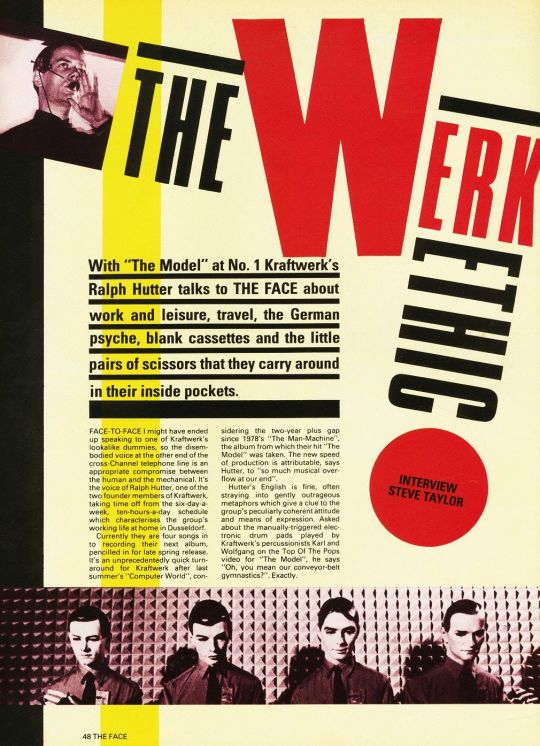
Brody, N. (1980). NEVILLE BRODY. The Face. Magazine, inside. 1980s.. [Editorial]. Retrieved from https://www.pinterest.co.uk/pin/461407924312729098/?lp=true.
The students at Bauhaus often used a process called ‘Photomontage’ which took images from various sources and mixed them together in a collage type manner, this was considered very cutting edge. The graduates approached the poster design in a similar manner and combined photocopying, metal objects and letterpress to create their collaborative piece. They were asked to select their three favourite designs and Neville Brody then selected the winner. It was interesting as the brief asked that the design be attention grabbing, and the completed designs were all in black, white and red - as my Anarchist of Love T-shirt and very much in the style of the ‘red topped’ daily newspapers I mentioned previously. Maybe the graduates had subconsciously tapped into that, that the colours and images used were attention grabbing like those daily newspapers were intended to be. Helen Ingham (2019) described the finished design as ‘quite punk’.
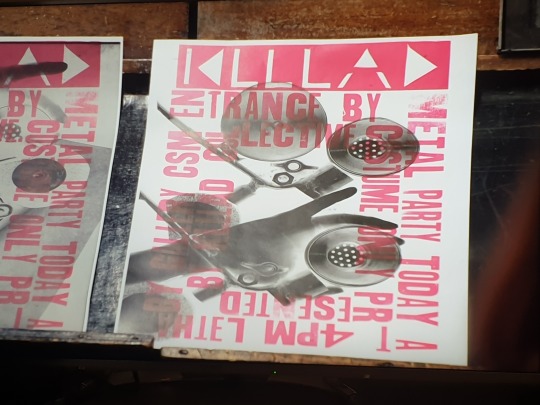
The last brief was delivered by fashion designer Holly Fulton who set the graduates the task of designing their own costumes for Saturday’s metal themed costume party as well as decorate the gallery space at Central Saint Martins. They had to be inspired by the costumes of artist and choreographer Oskar Schlemmer, who ran the Bauhaus theatre group. They were encouraged to think big, she wanted to see unique and interesting shapes emerging, Bauhaus was all about uniqueness. She said at the party they would have to pair up and involve themselves in the ‘Bauhaus Dance’ - which involved dancing in pairs without touching, but the wild stamping of feet and leaping in the air were highly encouraged! The graduates some up with a sub theme of ‘opposites attract’ like a magnet would attract, so worked this into their Bauhaus dance by incorporating dance moves which mirrored each other.
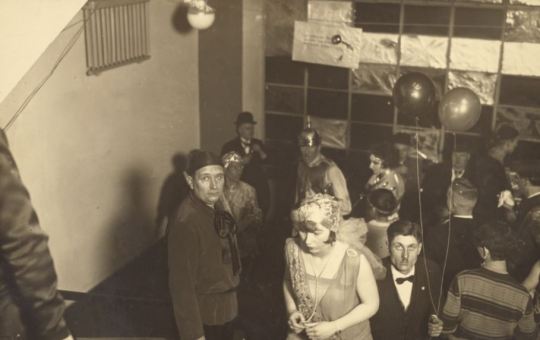
Binnmann, R. (1929). Metallisches Fest. [Photograph]. Retrieved from http://www.getty.edu/art/collection/objects/57672/rudolph-binnemann-metallisches-fest-german-about-1929/.
The graduates were given some metal objects to start them off and then quickly realised a trip to the shops was needed to gather more materials. The found hardware stores and the kitchen departments of interiors shops were the best places, and returned with a huge selection of goodies to inspire their designs. Costume parties at Bauhaus were highly competitive, it was all about who was the most avant garde and different. The graduates costumes were a huge success and really portrayed the Bauhaus spirit of experimentation and collaboration. If it wasn’t for the Bauhaus we may never of entertained the collaborative culture in the way we have, and still continue to do.
Vic Reeves had designed himself a metallic cyclops horse costume, which was certainly unique! He surely must have been inspired by the Bauhaus sense of experimentation. His comedy has always erred to the side of the avant garde, and was one of the pioneers of the alternative comedy scene. The Bauhaus parties were special to Walter Gropius, that when he died in in Boston, Massachusetts in 1969 at his request a metal themed ‘Fiesta a la Bauhaus’ party was held with ‘drinking, dancing, laughing and loving’.....very apt.
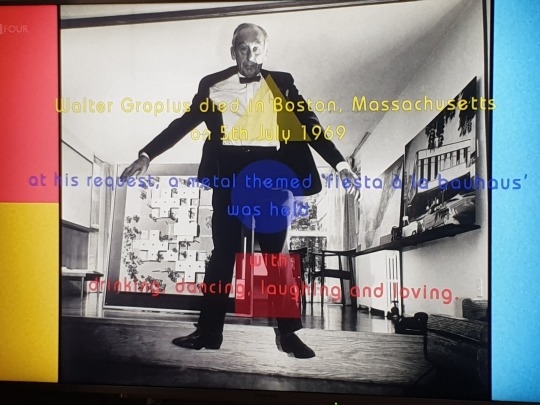
Websites:
Smirnova, E. (n.d). Basic Color Theory by Kandinsky. Retrieved from https://ekaterinasmirnova.wordpress.com/2012/08/06/basic-color-theory-by-kandinsky-44/.
Schneider, S.R. (2011). The Wassily Chair By Marcel Breuer. Retrieved from https://www.gentlemansgazette.com/wassily-chair-model-b3-by-marcel-breuer/.
Bauhaus 100. (n.d). Herbert Bayer. Retrieved from https://www.bauhaus100.com/the-bauhaus/people/masters-and-teachers/herbert-bayer/.
Documentary:
Moir, J. (Presenter) & Lloyd, S. (Director). (2019). Bauhaus Rules with Vic Reeves [Television series documentary]. In Lloyd. S (Producer), Design Season. London, England: BBC Four.
0 notes
Text
«Kaleidoskop» die Künstlergilde Eferding stellt in Wels aus
«Kaleidoskop» die Künstlergilde Eferding stellt in Wels aus
Nach der gelungenen Eröffnung der Ausstellung (Donnerstag, 14. September, 19.30 Uhr) kann diese im
Wimmer Medienhaus
Wels
Stadtplatz 41
3. Stock
noch bis zum 13. Oktober 2017 besucht werden:
Mo. bis Do. 8 – 12 und 14 – 16.45 Uhr
Ausstellende Künstlerinnen und Künstler
Karl Breuer
Roland Fraunberger
Daniela Gauder
Siegfried Gumpelmaier
Karin Hehenberger
Fritz Karl
Peter Schwarz
Wolfgang Schwarz
View On WordPress
#Daniela Gauder#Fritz Karl#Karin Hehenberger#Karl Breuer#Künstlergilde Eferding#Peter Schwarz#Roland Fraunberger#Siegfried Gumpelmaier#Wimmer Medienhaus
Wels#Wolfgang Schwarz
0 notes